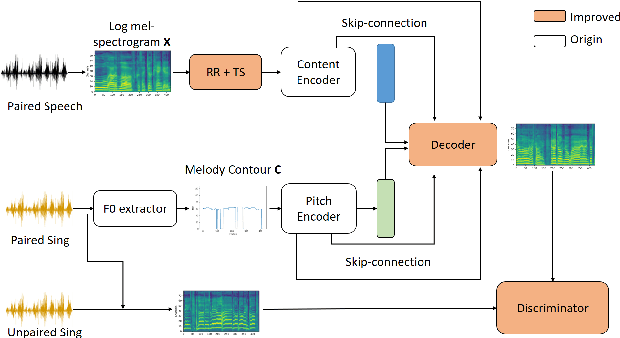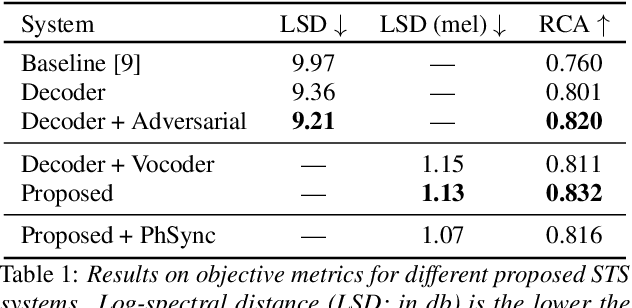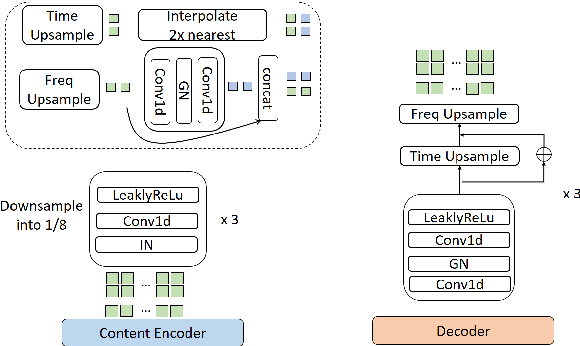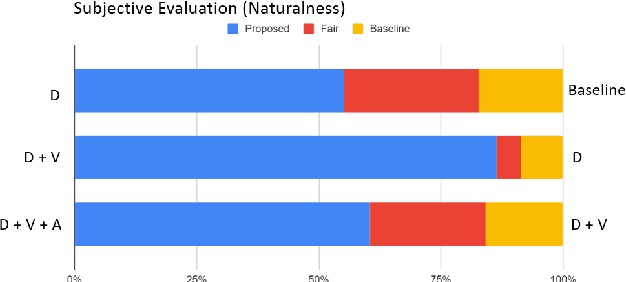Speech-to-Singing Conversion based on Boundary Equilibrium GAN
Paper and Code
May 30, 2020



This paper investigates the use of generative adversarial network (GAN)-based models for converting the spectrogram of a speech signal into that of a singing one, without reference to the phoneme sequence underlying the speech. This is achieved by viewing speech-to-singing conversion as a style transfer problem. Specifically, given a speech input, and optionally the F0 contour of the target singing, the proposed model generates as the output a singing signal with a progressive-growing encoder/decoder architecture and boundary equilibrium GAN loss functions. Our quantitative and qualitative analysis show that the proposed model generates singing voices with much higher naturalness than an existing non adversarially-trained baseline. For reproducibility, the code will be publicly available at a GitHub repository upon paper publication.
 Add to Chrome
Add to Chrome Add to Firefox
Add to Firefox Add to Edge
Add to Edge